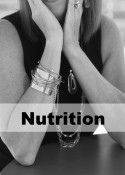Wellness Tips, Healthy Recipes, Inspirations, Lifestyle, Nutrition + More
10 Ways to Boost Your Daily Protein Intake

Daily life takes strength. From lifting your latest haul of groceries to carrying your growing toddler or grandchild up the stairs to conquering your fitness goals whatever age you are. Keeping your muscles strong requires regular exercise and consuming enough protein. This essential macronutrient provides the amino acids that are vital for building and maintaining healthy lean muscle mass..
Across the world, people are not consuming enough protein from quality sources.
This is especially concerning for elderly people, active individuals, menopausal women, and athletes. Everyone needs adequate amounts of protein for optimal health.
Protein deficiency can impair your immune system, stunt your growth, weaken your bones and muscles, and much more.
It also becomes especially important to focus on maintaining muscle as you get older. Muscle mass and function are gradually lost over the years.
By age 60, you may begin to lose the muscle strength and function needed to stay independent and energetic into your senior years (especially if you tend to have a more sedentary lifestyle).
And this decline can be even more pronounced in post-menopausal women.


The good news is that some muscle loss can be avoided.
Mature individuals can help maintain a good quality of life through working to stay strong by exercising regularly and by supporting muscle maintenance by consuming enough protein.
Because protein helps you feel fuller, longer, it may help you eat less if you’re trying to cut calories. And protein’s benefits for weight management.
But don’t stop there…
Muscles tend to burn more calories than fat, even when you’re at rest. So, by helping to maintain your lean body mass, a diet with increased protein can help support efficient energy metabolism.
Understanding the Role of Protein in the Body
01
Growth and Repair
Protein repairs and builds muscle. But it’s also involved in repairing other tissues, like skin, hair, nails, and bone.
02
Energy
Protein supports energy production, but it can also be used as an energy source itself.
03
Immunity
The antibodies your body needs to fight infections and illness are made of amino acids that come from your dietary protein.
04
Oxygenation
Protein is needed for your blood to carry oxygen throughout the body.
05
Metabolism
Your protein intake supports a healthy metabolism, which burns more calories throughout the day.
06
Hormones and Enzymes
Practically all hormones and enzymes in the body are proteins made from the amino acids in the protein you consume
The body doesn’t store protein the way it stores carbohydrates or fats. That’s why protein intake from your diet is so important.

How Much Protein Do I Need?
To maintain health, the Institute of Medicine recommends most people consume eight grams of protein for every 20 lbs. of body weight per day (.8 g/kg).
If you’re trying to manage your weight, higher intakes also may be needed. Research has shown that it’s important to consume more protein than your usual intake to see improvements. You may need about 37 percent more protein than the general recommendation, or 11 grams for every 20 lbs. of body weight (1.2 g/kg).
Adequate protein intake is crucial for maintaining muscle mass and boosting metabolism during and after menopause. Women should aim for a minimum of 1.0 to 1.2 grams of protein per kilogram of body weight daily
The key to maximizing the benefits of your protein consumption is spreading it into roughly equal amounts at every meal.
So, once you’ve calculated how much protein you need, divide that equally across the number of meals/snacks you generally eat every day.
10 Ways To Add More Protein to Your Diet
1
Incorporate Lean Meats: Include lean sources of protein like chicken, turkey, and lean cuts of beef or pork in your meals. They are rich in high-quality protein and low in unhealthy fats.
2
Eat More Fish: Fish like salmon, tuna, and trout are excellent sources of protein and also provide heart-healthy omega-3 fatty acids
3
Try Plant-Based Protein: Include plant-based proteins such as beans, lentils, chickpeas, and tofu. They are versatile, nutrient-dense, and great for both vegetarians and meat-eaters.
4
Snack on Nuts & Seeds: Almonds, walnuts, chia seeds, and flaxseeds are not only high in protein but also packed with healthy fats, fiber, and essential nutrients.
5
Use Greek Yogurt: Greek yogurt is a protein powerhouse. Opt for plain, unsweetened varieties and add fruits, nuts, or a drizzle of honey for extra flavor.
6
Add Eggs: Eggs are one of the most versatile and affordable sources of high-quality protein. They can be eaten boiled, scrambled, poached, or as part of various dishes.
7
Opt for Protein-Rich Snacks: Choose snacks like cottage cheese, protein bars (look for low sugar options), or a handful of edamame to keep your protein levels up throughout the day.
8
Incorporate Quinoa: Quinoa is a complete protein, meaning it contains all nine essential amino acids. It’s a great alternative to rice or pasta and can be used in salads, bowls, or as a side dish.
9
Use Protein Powders: Adding a scoop of protein powder to your smoothies, oatmeal, or yogurt is an easy way to boost your protein intake, especially post-workout. Look for high-quality powders without added sugars.
My favorite has 25 grams of 100% pure, grass-fed whey protein, without the fillers and sugar. Lately I’ve been making delicious iced vanilla lattes with it (1 or 2 scoops added to my favorite brewed coffee, 1 tablespoon Califia vanilla cream, blend and pour over ice…. so simple yet so much better for you than a coffee shop latte).
10
Include More Dairy: If tolerated, organic milk and other organic dairy products like cottage cheese are excellent sources of protein.
Want to learn more about my recommended Whey Protein Isolate? Click here.








